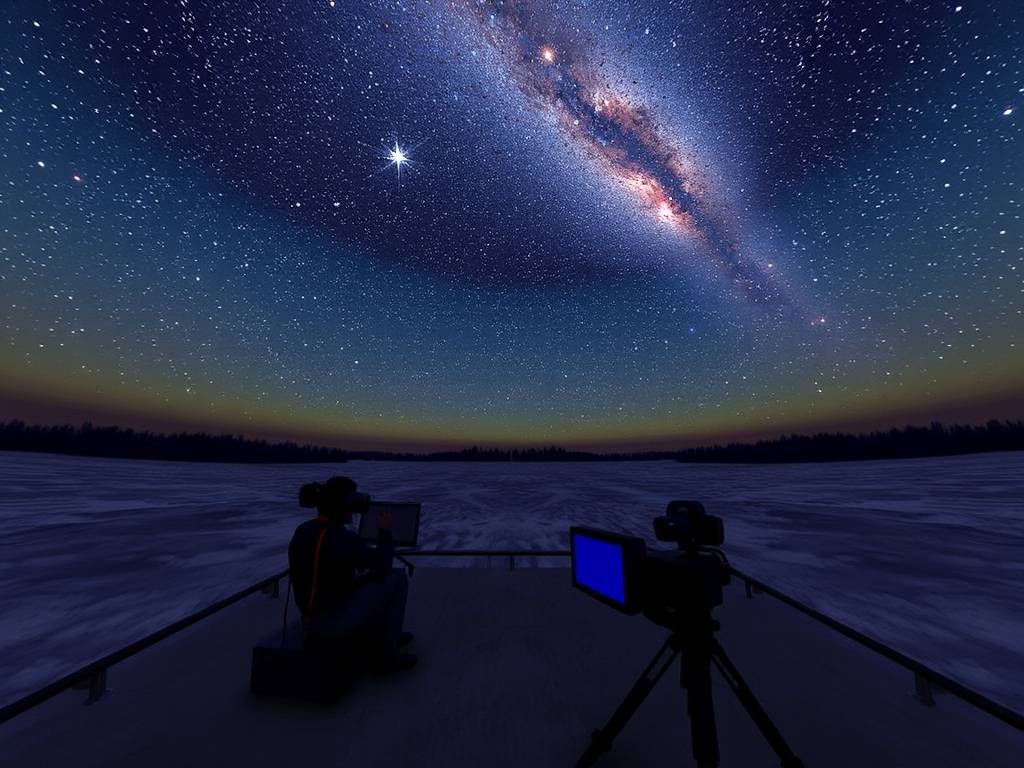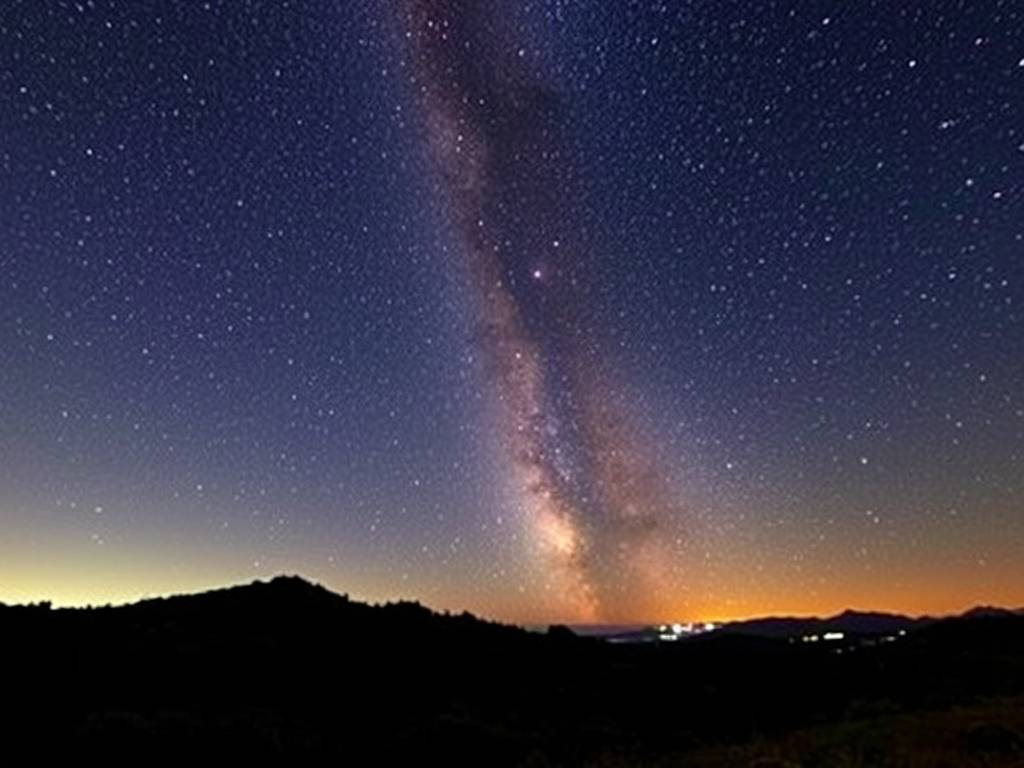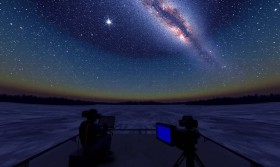Celestial Fireworks: How the Meteor Shower Simulator VR is Expanding Our Universe from the Living Room
For millennia, humanity has looked to the night sky with a sense of wonder, particularly during the predictable, dazzling displays we call meteor showers. Yet, for every person who has witnessed the ethereal streak of a Perseid or Geminid, countless others have been thwarted by light pollution, cloudy skies, inconvenient timing, or physical limitations. The dream of a perfect meteor shower observation often remains just that—a dream. But what if you could not only guarantee a front-row seat to the cosmos's greatest shows but also control them, understand them, and travel through them? This is the revolutionary promise of the Meteor Shower Simulator VR, a technological leap that is fundamentally expanding what it means to be an observer of the heavens.
The core appeal of any immersive VR astronomy experience is its ability to conquer the traditional barriers of stargazing. The Meteor Shower Simulator VR does this with breathtaking efficacy. With a simple headset, your living room transforms into a pristine, dark-sky site—be it a remote mountain peak, a silent desert dune, or the surface of the Moon. Gone are the frustrations of planning, travel, and weather. This virtual reality meteor shower observation platform offers instant access, making celestial wonders available to students in brightly lit cities, elderly enthusiasts who can no longer travel to dark-sky parks, and anyone with a curiosity about space, regardless of their location or circumstances.

However, this technology's true genius lies not in mere replication, but in its profound expansion of the observational experience. A real-world meteor shower is a passive, albeit beautiful, event. You watch, you wait, you hope. The Meteor Shower Simulator VR, on the other hand, turns you from a passive spectator into an active cosmic director. This is where the concept of "Observation Expansion" truly comes to life.
Imagine being able to manipulate time and space. With the simulator's intuitive controls, you can customize virtual meteor shower parameters in ways that are impossible in nature. You can slow down the arrival of a meteor to a crawl, watching in awe as a speck of cometary dust becomes a brilliant fireball, tracing its incandescent path across the sky in super-slow motion. You can speed up time, compressing an entire night's shower into a frenetic, five-minute storm of light, revealing patterns and rhythms invisible to the naked eye. You can even adjust meteor shower intensity and frequency, creating a gentle sprinkle of shooting stars or a legendary storm like the 1833 Leonids, where meteors fell like rain.
This control extends to the very nature of the meteors themselves. The software allows you to visualize meteoroid composition and trails with scientific accuracy. Select a "Perseid" meteor and see a visual representation of its origin from Comet Swift-Tuttle—a dusty iceball painting the sky with debris. Choose an "Iron-rich" meteoroid and watch it burn a different color than a "stony" one. This feature transforms abstract astronomical concepts into tangible, visual truths, making it an unparalleled interactive astronomy education tool for students. A lesson on the solar system becomes a voyage where students don't just read about comets; they fly alongside them, watching them shed the material that will, centuries later, become the meteors they "observe."
Furthermore, the simulator acts as a dynamic guide to major annual meteor showers. It doesn't just show you the shower; it teaches you about it. Overlaid information can highlight the radiant point—the spot in the sky from which the meteors appear to originate—explaining why this is an optical illusion. It can provide real-time data on the Zenithal Hourly Rate (ZHR), the theoretical maximum number of meteors you could see under perfect conditions. This contextual learning turns a beautiful light show into a deep educational session, answering the "what," "why," and "how" all in one seamless, engaging package.
For the avid enthusiast, the ability to experience historical meteor storms in VR is perhaps the most thrilling aspect. You can stand, virtually, under the sky of November 13, 1833, and witness the Leonid storm that sparked modern meteor science. Or, you can fast-forward to a future predicted storm. This virtual reality space exploration tool bridges the gap between historical record, future prediction, and present experience, creating a living timeline of our solar system's activity.
The expansion of observation also addresses a critical, often overlooked aspect of astronomy: accessibility. This is a truly accessible astronomy tool for people with mobility challenges. For individuals who use wheelchairs or find it difficult to be outside at night for extended periods, the simulator offers a dignified, powerful, and complete astronomical experience. It ensures that the joy of connecting with the cosmos is not a privilege reserved for the able-bodied or those with access to remote locations. This democratization of wonder is one of its most significant contributions.

Looking ahead, the potential for future updates for the meteor shower simulator is as vast as space itself. Developers could integrate live data feeds from NASA's All Sky Fireball Network, allowing users to see a virtual representation of actual meteors entering the atmosphere in real-time. Multiplayer modes could enable shared virtual reality stargazing sessions, where families and friends across the globe can gather under the same virtual sky to watch a shower together. The integration of more interactive astronomy education modules, perhaps involving gravity wells and orbital mechanics, could further solidify its role as a premier educational platform.
In conclusion, the Meteor Shower Simulator VR is far more than a simple video game or a pretty screensaver. It is a paradigm shift in amateur astronomy and public science engagement. It solves the user's core problem of inaccessible or disappointing real-world observations by providing a guaranteed, perfect, and deeply educational alternative. But it goes beyond solving that problem; it expands the very definition of observation. It empowers us to control time, understand physics, walk in the footsteps of history, and invite everyone to the party. It doesn't replace the authentic experience of lying on a blanket under a cool, clear night sky—it complements and enriches it, building a bridge of understanding and excitement that will inspire a new generation to look up, both virtually and, with newfound knowledge and passion, for real.


















